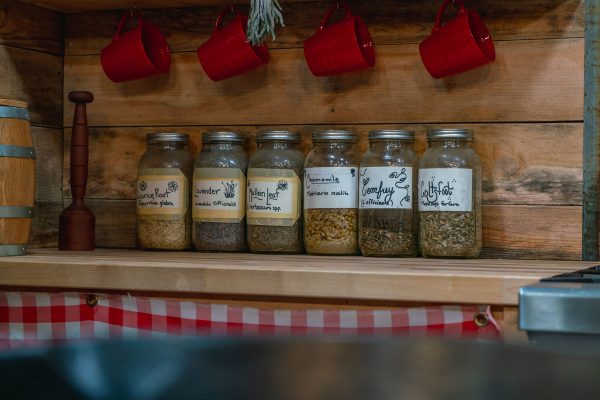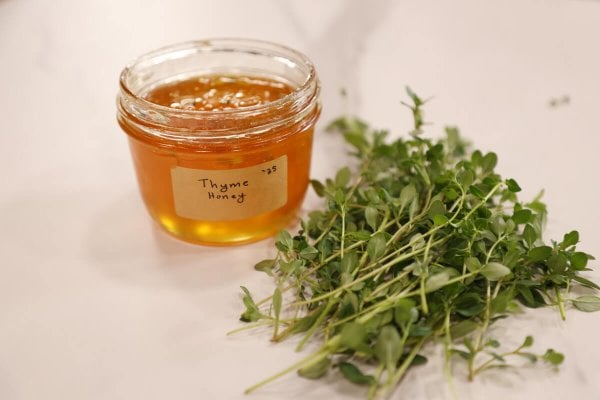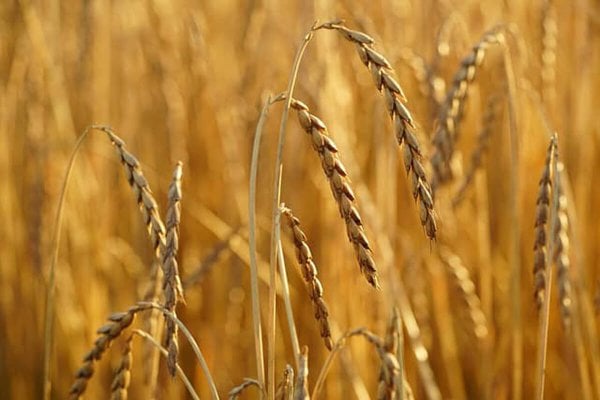Herbal tinctures have been commonly made and used for medicinal purposes for centuries. You can learn how to make herbal tinctures right at home using alcohol or glycerine with this simple DIY guide. Read on to get started.
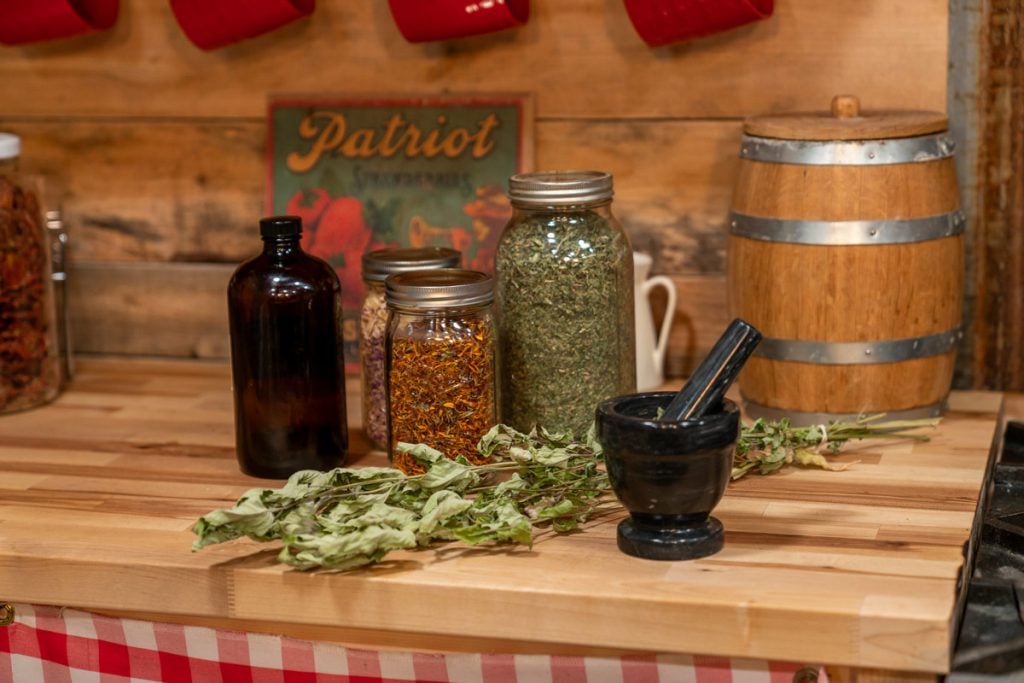
You can use herbal remedies to ease pain, boost your immune system, relieve cold and flu symptoms and even aid in emergency medical issues until help arrives.
Why I Love Using Tinctures
When my first child was born, I knew I wanted to be able to heal my family’s health complaints using herbal medicine.
This led to learning how to design a cottage garden so that I could grow medicinal herbs and make herbal remedies such as homemade elderberry syrup, elderberry gummies, bone healing comfrey compress, mustard plaster for chest congestion, oxymel to soothe a cough, arnica salve for sore muscles, and more.
Getting started with herbal medicine felt overwhelming at first, and it took a lot of time and practice to organize everything I was learning.
To help others to avoid this overwhelm, I designed my masterclass, Herbal Medicine Cabinet – Colds and Flu so that you can skip the confusion and get started making your own herbal remedies with confidence.
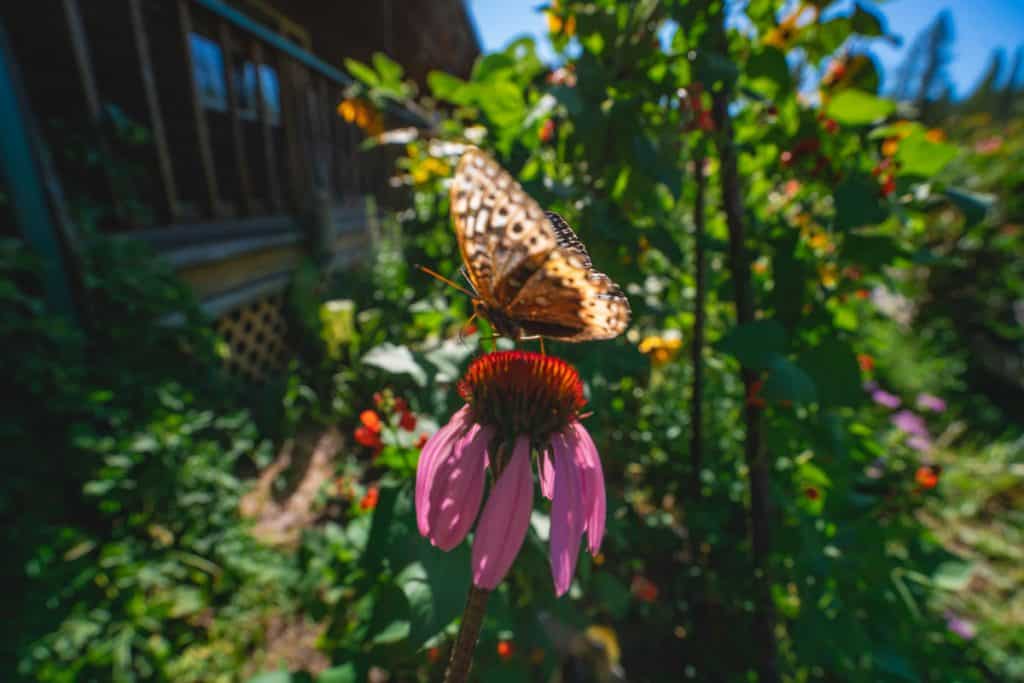
Medicinal herbs can be used in a variety of ways, such as teas, salves, syrups, etc. Tinctures are a powerful way to administer herbs because they have more concentrated medicinal compounds.
Taken orally or topically, tinctures are highly absorbable and fast acting. When stored properly, they will never spoil, and best of all, they are easy to make.
It’s important to note that I am not a certified medical practitioner. This post is not intended to diagnose or treat but is for informational purposes only. Please contact your medical care professional before introducing new herbal remedies into your wellness routine.

What Is a Tincture?
Tinctures are concentrated liquid herbal extracts. They are made by steeping fresh or dried herbs and other plant parts in alcohol for four weeks, on average. The alcohol breaks down the plant’s cell wall, releasing its bioactive compounds to be then stored in the alcohol.
Tinctures produced with ethyl alcohol or glycerine are for internal use. Herbs tinctured in rubbing alcohol (isopropyl), oil or witch hazel are only for external use.

Common Herbs Used to Make Tinctures
You can use a long list of herbs and plants to make tinctures. It can be easy to get carried away when planning what to plant in your herb garden. The great thing about herbs is that most of them are perennial, so even if you aren’t ready to use them this year, they should be around for you to use when you are ready for them!
You can use herbs in every season. I encourage you to take the time to read through the list of herbs and what remedies you can make with them to help you narrow down what you need.
Here is a general list of common herbs used to make tinctures in no particular order.
- Lavender – Good for calming, easing anxiety, and helping with insomnia. (Source)
- Yarrow – This is the best herb in the world for bleeding! (Source) It’s also great for respiratory health. (Source)
- Arnica – This is excellent at reducing inflammation. Use it to reduce pain and swelling from muscle aches/tension, bruises, bumps and even arthritis. (Source)
- Echinacea – Echinacea is great for boosting your immune system or winter cold and flu prevention. (Source)
- Hops – Hops are a stomachic and very helpful for soothing an upset stomach. But they also have antibacterial properties, making them good for infections in the gut. (Source)
- Lemon Balm – Lemon Balm is great for boosting the immune system, calming anxiety and stress, and promoting restful sleep. It also can be applied topically to kill the herpes virus (cold sores, shingles). (Source)

Using Homemade Tinctures
As with any healing agent, herbal tinctures can be quite powerful, and the user can have adverse reactions. Make sure to take the time to educate yourself on the herb you’re using before you try it.
There isn’t a standard “dose” when it comes to homemade tinctures. It’s best to begin a new tincture by trying only a few drops, drinking it in warm water or tea once a day. You may feel the effects in as few as 5-30 minutes.
You can then slowly work up to more drops or several times a day until you experience the results you desire.

Supplies Needed
- Glass Jar – You will need a clean glass jar with an airtight lid. A plastic lid is best, as a metal lid can rust over time due to exposure to alcohol. Homesteading Hack: You can simply cover a metal lid with a piece of parchment paper to protect it. Don’t use a plastic sandwich bag because it will break down with the alcohol.
- Small, Dark Glass Bottle – Storing tinctures in the dark protects the liquid from sunlight. An amber bottle with a dropper-style lid is best for administering doses of the tincture.
- Mesh Strainer – You can use a metal mesh strainer or a piece of cheesecloth to strain your tincture before bottling it for storage.
- Label – You will want to be sure to label your bottles for identifying your tinctures. A label maker or a piece of masking tape and a permanent marker will do.
- Knife – You may need a knife to chop larger flowers, roots or leaves of your herbs.
- Metal Funnel – Using a funnel will make pouring the liquid into the small, dark jars easier and will prevent any spills or waste of the tincture.
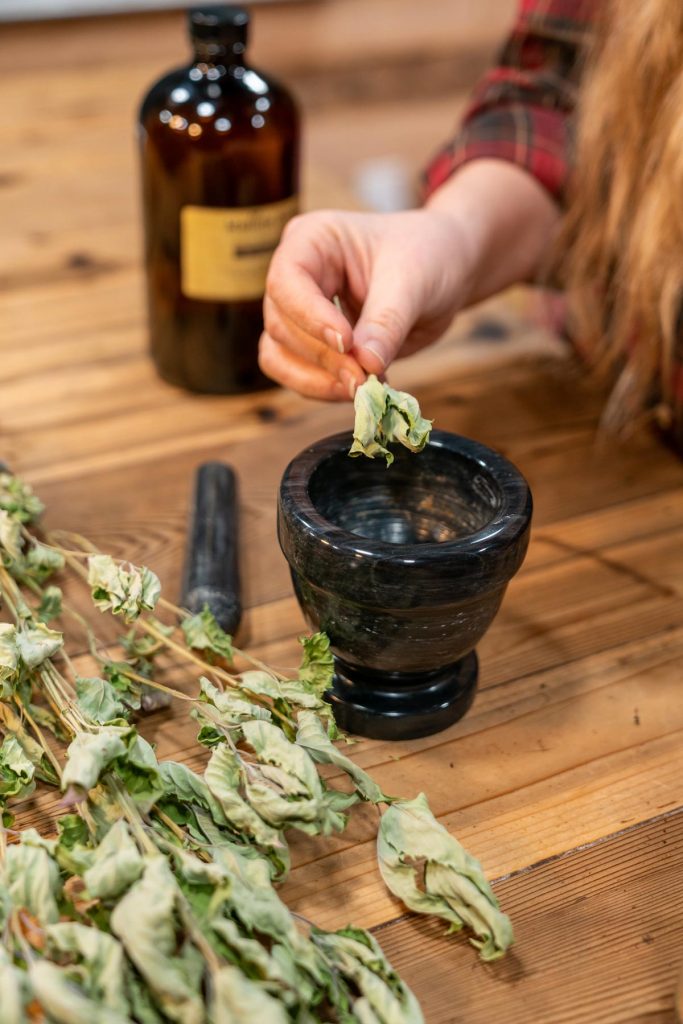
Ingredients Needed
- Fresh or Dried Herbs – Choose the herbs you wish to use, making sure they are properly identified.
- Bottle of 80-proof (or Higher) Ethyl Alcohol – Most herbalists prefer to use vodka because of its colorless, tasteless and odorless qualities. Brandy is also a popular choice.
- Vegetable Glycerine – This is optional. Glycerin can be used as an alternative to alcohol. It is often a good choice for children, animals and adults who may not use alcohol for sensitivity or religious reasons. However, please note that glycerine herbal tinctures do not have the same long-lasting shelf life that alcohol tinctures do. Glycerin-based tinctures typically last 1-2 years.

How to Make Herbal Tinctures
- Decide what kind of tincture you would like to make. You can use one herb or a mixture of herbs. It depends on the type of properties and medicinal purpose you want your tincture to have.
- Leave delicate herb leaves and flowers whole but chop any large leaves, roots, or flowers into smaller pieces.
- Place the plant parts into your small glass jars. If using dried herbs, fill the jar about ⅓ of the way. If using fresh herbs, fill the jar to the top.
- Pour the alcohol (or glycerine) over the herbs, making sure the herbs are completely covered. Filling the jar approximately 2 inches over the herbs will do.
- Place the airtight lid on the jar and give it a good shake.
- Label the jar with the herbs used, the kind of alcohol (or glycerine) used, and the date made.
- Put the jar in a room temperature, dark place for 4-6 weeks.
- Check on your jars weekly, giving them a good shake. Be sure the alcohol is still fully covering the herbs. If needed, you can add more alcohol.
- After 4-6 weeks, strain the alcohol, making sure to squeeze all the liquid from the herbs.
- Using a funnel, pour the liquid into the dark glass jars for storage.
- Make sure to properly label the tincture bottle with the name, alcohol (or glycerine) used and the date it was bottled.
- Store in a cool, dark place, such as a medicine cabinet or shelf in your pantry.
Did you make a tincture? If so, please leave us a star rating in the how-to card below. Then snap a photo of your tincture and let us know what you made on social media @homesteadingfamily so we can all learn together!
And don’t forget to check out my herbal masterclass, Herbal Medicine Cabinet – Colds and Flu so your medicine cabinet is stocked and ready to care for your family’s needs.

Other Articles You May Enjoy
- How to Start Using Medicinal Herbs
- Medicinal Herbs and Their Uses
- How to Dry Fresh Herbs
- What to Do In an Emergency Until Help Arrives
- Using Medicinal Herbs on Farm Animals
- How to Use Herb Medicine Safely at Home
- How to Make Arnica Oil
- Elecampane Benefits and Growing Guide

How to Make an Herbal Tincture
Equipment
- Glass Jar with airtight lid
- Dark Glass Dropper Bottles optional
Ingredients
- herb of choice see list of options below
- alcohol (80-proof or higher) or glycerin, enough to cover the herbs
Instructions
- Decide what kind of tincture you would like to make. You can use one herb or a mixture of herbs. It depends on the type of properties and medicinal purpose you want your tincture to have.
- Leave delicate herb leaves and flowers whole but chop any large leaves, roots, or flowers into smaller pieces.
- Place the plant parts into your small glass jars. Filling the jar about ⅓ of the way is a good amount to start with.
- Pour the alcohol (or glycerine) over the herbs, making sure the herbs are completely covered. Filling the jar approximately 2 inches over the herbs will do.
- Place the airtight lid on the jar and give it a good shake.
- Label the jar with the herbs used, the kind of alcohol (or glycerine) used, and the date made.
- Put the jar in a room temperature, dark place for 4-6 weeks.
- Check on your jars weekly, giving them a good shake. Be sure the alcohol is still fully covering the herbs. If needed, you can add more alcohol.
- After 4-6 weeks, strain the alcohol, making sure to squeeze all the liquid from the herbs.
- Using a funnel, pour the liquid into the dark glass jars for storage.
- Make sure to properly label the tincture bottle with the name, alcohol (or glycerine) used and the date it was bottled.
- Store in a cool, dark place, such as a medicine cabinet or shelf in your pantry.
Notes
- Lavender – Good for calming, easing anxiety, and helping with insomnia.
- Yarrow – This is the best herb in the world for bleeding! It’s also great for respiratory health.
- Arnica – This is excellent at reducing inflammation. Use it to reduce pain and swelling from muscle aches/tension, bruises, bumps and even arthritis.
- Echinacea – Great for boosting your immune system or winter cold and flu prevention.
- Hops – This is very helpful for soothing an upset stomach. But it also has antibacterial properties, making it good for infections in the gut.
- Lemon Balm – Great for boosting the immune system, calming anxiety and stress, and promoting restful sleep. It also can be applied topically to kill the herpes virus (cold sores, shingles).











